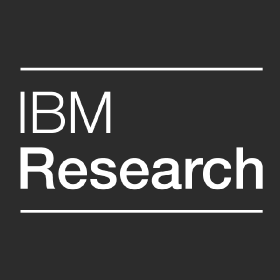IBM is open sourcing project “Tornjak” to encourage the development and adoption of enterprise-level identity management between clouds.
Sunday 29 August 2021
Open source workload identity management could help secure hybrid clouds
Saturday 28 August 2021
Amid back-to-school and holiday shopping supply chain concerns, consumers want improved transparency
Consumers weary from ongoing supply chain strains are demanding greater transparency and certainty from retailers and e-commerce sites as they undertake back-to-school and holiday shopping. With record spending anticipated for back-to-school season this year amid expected shortages and reduced inventories, just under half of parents are concerned about back-to-school supplies (42 percent) and availability of holiday gifts (46 percent) – according to a new survey of consumers conducted by Morning Consult on behalf of IBM.
The survey also found that millennials are most concerned about their ability to purchase back-to-school supplies (36 percent) and holiday gifts (42 percent) compared to other generations. Further, nearly half of all consumers stated they are more likely to purchase from a business using advanced technologies such as AI to help reduce shipping delays. To address a growing shift in consumer expectations, IBM recently launched Sterling Intelligent Promising to help retailers and e-commerce businesses make more accurate and reliable order delivery promising earlier in the process.
The recent “Intelligent Promising Survey” of 2,200 U.S. adults conducted by Morning Consult on behalf of IBM Sterling, respondents indicated that information at-a-glance and fast delivery speeds when shopping online were critical to their shopping decisions. Two thirds said they expect to have delivery (67 percent) and inventory (65 percent) options at a immediately available when shopping online, while 64 percent will go somewhere else to purchase an item if it is not available for delivery within one to two weeks. Parents of school-aged children are more likely to expect delivery and inventory options at-a-glance and will switch retailers if necessary to reduce delivery time, and are generally more critical of retailers — 71 percent indicated they will stop shopping at places that do not meet their needs compared to consumers generally.
Looking more closely at generational trends, the survey found that GenZers and Millennials care more about fast, convenient delivery options. GenXers and Baby Boomers are more likely to expect delivery and inventory options at-a-glance. Among men and women, 40 percent of consumers surveyed think two-day delivery is important while 38 percent responded getting an item shipped from a local store for faster delivery is important.
Helping retailers and e-commerce businesses increase their agility to meet these evolving shopper preferences, the new Sterling Intelligent Promising software helps provide greater transaction trust and transparency for shoppers. It also gives consumers more direct influence in tailoring their unique customer experience. By offering greater certainty of product availability and delivery estimates, choice of where and how to fulfill an order, and transparency about order status across the order journey, retailers can build greater brand affinity with shoppers.
The study also revealed a new trend, a preference among shoppers for more sustainable and environmentally-friendly shipping options. 56 percent of consumers under 35 years said they are more likely to purchase from a retailer using AI-based tools to minimize the carbon footprint of their order. Among GenZ respondents, 45 percent said that delivery options that reduce environmental impact are most important to them while 34 percent of women are more likely to care about sustainable shipping options. However same-day delivery and curbside pick-up are more important to 30 percent of male respondents.
Supporting this shift to AI-enabled omnichannel fulfillment innovations empowering next-generation shoppers, the AI-powered Sterling Intelligent Promising helps retailers and e-commerce companies give shoppers increased control over their customer experience and the environmental impact of their purchasing preferences. Sterling Intelligent Promising is built on a modern, cloud native microservices-based architecture to easily integrate and scale with any order management system. The new offering helps improve order transparency with more accurate estimated delivery dates, while sourcing merchandise from the closest, fastest fulfillment point. This helps retail and e-commerce businesses keep costs down and reduce their carbon footprint with optimized shipping decisions with a new carbon accounting engine.
Sterling Intelligent Promising fulfillment software helps retailers and e-commerce businesses make more accurate and reliable delivery promising and optimization earlier in the ordering process. This helps develop greater transaction trust and transparency with shoppers to help increase in-store and digital conversion rates at scale. It also gives consumers more direct influence in tailoring their unique customer experience. As fulfillment operations complexity continues to increase with more purchases coming through multiple channels, doing so without purpose-built intelligent fulfillment can lead to sub-optimal experiences, missed sales opportunities and margin erosion. By offering shoppers greater certainty of product availability and delivery estimates, choice of where and how to fulfill an order, and transparency about order status across the order journey, retailers can build greater brand affinity with shoppers.
Sterling Intelligent Promising helps retailers and e-commerce businesses:◉ Maximize inventory productivity by making enterprise-wide inventory available to shoppers based on business priorities such as reducing time or cost to deliver merchandise, or increasing profitability of orders. The solution enables inventory from across the enterprise, including stores, to be visible to shoppers across the entire online shopper journey including product list and product detail pages within milliseconds. This gives retailers granular control over online inventory availability at each fulfillment location and the ability to make better available-to-promise decisions.
◉ Make and manage accurate order promises to shoppers including any combination of deliver-by, deliver-on, deliver-during and deliver-at across their order journey. The solution influences promising from cart, to checkout and post order experience, supporting a wide range of fulfillment experiences such as BOPIS, ship-from-store (SFS) and curbside pick-up.
◉ Optimize fulfillment for improved profitability and sustainability by minimizing fulfillment costs such as distance, labor, capacity, carrier cost as well as profit impacts including markdown or stockout data. It includes AI-driven detailed optimization decision explanations.
Source: ibm.com
Thursday 26 August 2021
IBM Telum Processor: the next-gen microprocessor for IBM Z and IBM LinuxONE
In today’s digital economy, data offers tremendous opportunities for harvesting value. Yet extracting insight from real time enterprise transactions can present an elusive goal. Running deep learning models on high volume transactional data is difficult to attain with off-platform based inference solutions, as latency, variability and security concerns can make them impractical in response-time sensitive applications. IBM is addressing this challenge through recent innovations in system and microprocessor design.
Today IBM announced the IBM Telum Processor at HotChips; Telum will be the central processor chip for the next generation IBM Z and LinuxONE systems. Organizations who want help in preventing fraud in real-time, or other use cases, will welcome these new IBM Z innovations designed to deliver in-transaction inference in real time and at scale.
The 7 nm microprocessor is engineered to meet the demands our clients face for gaining AI-based insights from their data without compromising response time for high volume transactional workloads. To help meet these needs, IBM Telum is designed with a new dedicated on-chip accelerator for AI inference, to enable real time AI embedded directly in transactional workloads, alongside improvements for performance, security, and availability:
◉ The microprocessor contains 8 processor cores, clocked at over 5GHz, with each core supported by a redesigned 32MB private level-2 cache. The level-2 caches interact to form a 256MB virtual Level-3 and 2GB Level-4 cache. Along with improvements to the processor core itself, the 1.5x growth of cache per core over the z15 generation is designed to enable a significant increase in both per-thread performance and total capacity IBM can deliver in the next generation IBM Z system. Telum’s performance improvements are vital for rapid response times in complex transaction systems, especially when augmented with real time AI inference.
◉ Telum also features significant innovation in security, with transparent encryption of main memory. Telum’s Secure Execution improvements are designed to provide increased performance and usability for Hyper Protected Virtual Servers and trusted execution environments, making Telum an optimal choice for processing sensitive data in Hybrid Cloud architectures.
◉ The predecessor IBM z15 chip was designed to enable industry-leading seven nines availability for IBM Z and LinuxONE systems. Telum is engineered to further improve upon availability with key innovations including a redesigned 8-channel memory interface capable of tolerating complete channel or DIMM failures and designed to transparently recover data without impact to response time.
IBM Z processors have a history of embedding purpose-built accelerators, designed to improve performance of common tasks like cryptography, compression, and sorting. Telum adds a new integrated AI accelerator with more than 6 TFLOPs compute capacity per chip. Every core has access to this accelerator and can dynamically leverage the entire compute capacity to minimize inference latency. Due to the centralized accelerator architecture with direct connection to the cache infrastructure, Telum is designed to enable extremely low latency inference for response-time sensitive workloads. With planned system support for up to 200 TFLOPs, the AI acceleration is also designed to scale up to the requirements of the most demanding workloads.
Keeping data on IBM Z offers many latency and data protection advantages. The IBM Telum processor is designed to help clients maximize these benefits, providing low and consistent latency for embedding AI into response time sensitive transactions. This can enable customers to leverage the results of AI inference to better control the outcome of transactions before they complete. For example, leveraging AI for risk mitigation in Clearing & Settlement applications to predict which trades or transactions have high risk exposures and to propose solutions for a more efficient settlement process. A more expedited remediation of questionable transactions can help clients prevent costly consequences and negative business impact.
For instance, one international bank uses AI on IBM Z as part of their credit card authorization process instead of using an off-platform inference solution. As a result, the bank can detect fraud during its credit card transaction authorization processing. For the future, this client is looking to attain sub-millisecond response times, exploiting complex deep learning AI models, while maintaining the critical scale and throughput needed to score up to 100,000 transactions per second, nearly a 10X increase over what they can achieve today. The client wants consistent and reliable inference response times, with low millisecond latency to examine every transaction for fraud. Telum is designed to help meet such challenging requirements, specifically of running combined transactional and AI workloads at scale.
In today’s IT landscape, it’s not just about the data you have, but how you can leverage it for maximum insight. For this reason, knowing how to utilize AI and having the infrastructure ready made to support it has become the new standard in computing. The first step in becoming future ready starts with Telum.
Source: ibm.com
Thursday 19 August 2021
New research helps make AI fairer in decision-making
Our team developed the first practical procedures and tools for achieving Individual Fairness in machine learning (ML) and artificial intelligence (AI) systems.
Tuesday 17 August 2021
Flexible, agile, and secure: modernizing applications with IBM Z
Sunday 15 August 2021
How OMS technology can help distributors become value-added partners
With the modernization of technology, manufacturers have more tools at their disposal to serve customers directly — challenging the distributor’s role in the supply chain. Distributors should consider leveraging technology to enable and strengthen their customer and supplier partnerships, creating value that might not otherwise be possible. B2B order management solutions create opportunities for manufacturers and distributors to work together for improved sales, reduced costs, enhanced collaboration and stronger customer relationships.
Improve sales
The B2B market is restructuring and digitizing, with B2B eCommerce estimated to account for 17% of all B2B sales in the US by 2023. Distributors need technology solutions built for B2B that power their growing eCommerce footprint, with scalability for even their highest demand. Distributors relying on their ERP are not prepared to thrive in an increased eCommerce environment. ERPs lack the ability to harness real-time inventory and fulfillment data, and their disjointed processes lead to lost sales and backorders. By augmenting ERPs with advanced order and inventory management solutions, distributors can unify disparate data sources and provide a more accurate picture of what inventory is available to customers. With insight into inventory, distributors can optimize stock levels to guarantee fulfillment of orders.
Additionally, inventory visibility lays the groundwork for a successful customer eCommerce experience. A single, unified view of inventory makes complex orders easier to manage. This visibility enables delivery tracking so distributors can create a transparent customer experience, giving them confidence in where the order is and the ability to accurately promise when it will be delivered.
Reduce costs
Even with value-added services and self-service capabilities, distributors still struggle to expand margins, requiring a need for greater innovation. And, with COVID-19, business priorities are shifting to focus more on operational efficiency, with reducing costs at the top of the list. Distributors can use modern order and inventory management technology to reduce costs through several avenues:
◉ Reducing human error: By automating manual processes in pricing, ordering, processing and sourcing, distributors can avoid the costs of human error.
◉ Smart sourcing and fulfillment: Rather than relying on a person to select the best fulfillment option, use AI to analyze all fulfillment options to find the true lowest cost-to-serve option that still meets SLAs.
◉ Reduce inventory costs: With full visibility into inventory across the supply chain, distributors can spot redundancies and find opportunities to reduce excess inventory holding costs.
◉ Avoid contract penalties: Instead of traditional first come, first serve processes to determine how they fulfill orders, distributors can lean on smart supply chain technology to prioritize customers based on their contractual needs, so they serve the most critical customers first and avoid penalties.
Enhance collaboration with data sharing
There are clear trust barriers to sharing data between distributors and manufacturers, stemming from fear of unintentionally giving away valuable competitive data. However, there is real value in data sharing with manufacturers. It creates visibility across the value chain to enable all supply chain stakeholders to react more quickly, and improves trust and provenance across the value chain. Although this collaboration is only successful with clear value propositions and rationales for data sharing, as well as mutually beneficial agreements, it can provide significant benefits for both parties and the end customer.
Data sharing can improve resource coordination and visibility into value chains, ultimately delivering better customer experiences and accelerating profitability. When organizations don’t share data, they create blind spots. Sharing information helps select the best possible customer outcome- whether that’s a direct to customer delivery from the manufacturer, a drop-shipment, or a delivery from a distribution center. And, with data sharing, distributors and manufacturers can gain end-to-end visibility across the value chain, improving the ability to react quickly to unexpected events and reduce inventory.
With visibility across the supply chain, distributors are able to understand and act on changes in the market as they occur – to perfectly balance protecting margins, utilizing store capacity and meeting delivery expectations. These sourcing decisions can dramatically increase profits, especially during peak periods. Perhaps the manufacturer has inventory that could be delivered to the customer at a lower cost, but a distributor’s warehouse is much closer. With hasty delivery prioritized, the distributor and manufacturer both know they are serving that customer best by going through the distributor instead of direct to customer.
Closer customer relationships
With changing customer demands, distributors must rethink their supply chains to satisfy customers and drive profitability. Distributors must prioritize exceptional customer relationships and invest in improving customer experiences. Technology creates opportunities to make smarter, more insightful decisions to serve those people even better and improve customer retention.
Personalized eCommerce
Distributors excel because of their local, personalized services. Distributors can go one step further in tailoring the order experience by providing unique online sales catalogues or pricing options based on the customer themselves, providing more relevant and helpful eCommerce experiences.
Seamless self-service
Distributors are increasing their use of self-service tools to drive online sales. By simplifying their online ordering experience, distributors can empower customers to seamlessly complete complex orders across multiple brands.
Modern fulfillment experiences
By embracing automation and AI, distributors can deliver to customers cheaper and faster than ever before, enhancing the customer experience.
Enabling customer confidence
With today’s order and inventory management technology, distributors can give their customers the confidence to know that their order will arrive on time and in full, improving customer loyalty and repeat purchasing. Distributors can enable customer confidence by investing in technology that provides real-time inventory availability for sales catalogs and calculates accurate delivery estimates backed by intelligent insights.
With growing customer demands and changing technology, distributors need to navigate their complex commerce landscape with a customer-centric perspective, creating value from order to delivery. By augmenting existing supply chain applications with IBM Sterling Order Management, they can fill key capability gaps to enhance the customer experience and increase revenue.
Source: ibm.com
Saturday 14 August 2021
Part 1: 3 ways retailers can gift themselves with enhanced inventory management this holiday season
The season of giving is quickly approaching retailers and consumers alike. With many merchants facing challenged supply chains and weakened operations as a direct result of COVID-19, this season may not be the happiest time of year for retailers – despite the holiday’s historic reputation to deliver just that. However, there’s still ample opportunity for retailers to proactively prepare for a successful holiday season.
More Info: C9530-001: IBM Integration Bus v10.0 Solution Development
Bringing clarity to inventory management is the most valuable asset – or gift – a retailer can give themselves. This clarity is delivered by data, ultimately providing real-time visibility into inventory both accessible and not accessible to consumers at any given time and via any channel they interact with. Whether consumers are browsing online, shopping in a physical store or using a search engine to direct themselves to other sources of inventory, like marketplaces and more, retailers need to have the confidence that their inventory being shared with consumers is in fact available.
Expanding on this, here are three ways retailers can gift themselves this holiday season through inventory management.
#1: Eliminate multiple inventory tracking systems by introducing a single inventory system to help boost operations, customer experience and sales
Leveraging multiple, disparate inventory tracking systems creates issues with acheiving accurate inventory availability and thus, compromises consumer trust and retailer profit opportunities. Merchants lose dollars when they do not have up-to-the-second intelligence of their stock across their entire supply chain. As a result, this potentially puts them at risk of losing revenue. But they do not have to manage their business this way. With cloud-based solutions, such as IBM Sterling Intelligent Promising, retailers can avoid lost sales due to a lack of understanding accurate inventory levels, as well as avoid overpromising and unnecessary shipping charges. And all of this can be managed while meeting customer demands. This omnichannel effort is truly a gift that gives back year-round to merchants that welcome it into their operations.
#2: Gain a 360-degree perspective on fulfillment opportunities, challenges and all touchpoints that connect these avenues together
#3: Welcome an endless aisle into your inventory management that connects you to more customers, more often
Among the many advantages of retailers using a single inventory tracking system is that they gain more control over their future inventory planning efforts thanks to the real-time data it provides across all channels. As retailers look ahead to the holidays, it’s critical to have a single view of inventory via one dashboard that can be customized to meet both immediate needs and future inventory planning efforts. This can include drop-shopping, supplier management, traditional brick and mortar, and digital selling avenues such as ecommerce and marketplaces. With an endless aisle approach, retailers can welcome endless opportunities to drive business success.
As we look ahead to the holiday season, it’s important to reflect on past and current operational challenges you have had in order to overcome them in the months leading up to the holidays. With inventory management being at the core of all retail businesses, it’s fair to say that gifting your retail operations a real-time inventory visibility and management system is the best present you can give yourself to overcome these challenges. And the best part about this? More transactions should follow, which is ultimately the best gift of all – increased sales.
Source: ibm.com
Thursday 12 August 2021
IBM and Adobe strengthen collaboration for smarter supply chains
IBM and Adobe have expanded their strategic alliance, an extension of our successful 20-year services partnership, making IBM one of Adobe’s top global services and technology partners. Over the course of this partnership, we’ve collaborated to combine Adobe’s world-class digital business solutions to drive digital commerce innovation experiences for new and prospective customers.
To meet changing customer demands and expectations – and set a new bar for B2C and B2B digital commerce – IBM Sterling® Order Management and Adobe Commerce worked together to create a new connector that provides a direct integration between our solutions. Sterling Order Management and Adobe Commerce’s collaboration makes it easier for small and large customers to use the two technologies together, while also automating processes with extended intelligent workflows to increase business agility.
As businesses emerge from the shadow of the pandemic, gaining market share and customer trust are mission critical. Organizations that have already made the digital transformation of customer experience (CX) a formal business priority have already earned a competitive edge.
The latest IBM Institute for Business Value report, which surveyed companies using Adobe’s digital experience platform (DXP) applications, focuses on how organizations are exploiting their DXPs to digitally transform CX. The data reveals that Experience Leaders see their DXPs not just as a set of technologies, but as a strategic play for increasing profits and scaling rapidly.
Sterling Order Management and Adobe Commerce help companies make/structure/execute on digital strategic plays that increase profits while focusing on the customer experience. By combining the front-end capabilities of Adobe Commerce, with the back-end order management features of Sterling Order Management, businesses will be able to create engaging experiences that better manage orders and meet customer expectations, in real-time, to help instantly mitigate order fulfillment issues or customer experience disruptions.
With Sterling Order Management, businesses can track orders from inception to delivery, manage processes and data throughout the order lifecycle, and get real-time visibility into every order across channels. Our modern order management system allows organizations to enhance automation, accelerate operations, and reduce errors while optimizing the customer experience. Sterling Order Management Essentials caters to small-medium businesses who want a prescriptive model and quick implementation. All Sterling solutions provide with the ability to scale for unprecedented demand, satisfy customer needs across channels, adapt to new fulfillment methods, and provide quick time-to-value at a low cost.
IBM offers an extensive partner network trusted for their in-depth knowledge, customer-centric focus and ability to work with IBM and their customers. And IBM iX, the business design arm of IBM Services, is ready to help customers rapidly deploy this new integration and provide consulting and implementation services to Adobe customers to help accelerate their path to an exceptional customer experience.
Source: ibm.com
Tuesday 10 August 2021
IBM Research and Red Hat work together to take a load off predictive resource management
PayPal, the global payments giant, has already started putting load-aware scheduling into production.
The auto-scaler has just been made generally available and supported by Red Hat in OpenShift 4.8, and the load-aware scheduling is expected to be available in the next release of OpenShift.“Our collaboration with IBM Research takes an upstream-first approach, helping to fuel innovation in the Kubernetes community.
Sunday 8 August 2021
3 ways the auto industry benefits from simplified supplier collaboration
Managing a diverse and agile supplier network is now a top priority in the auto industry and essential to remain competitive. Whether shifting to produce electric vehicles, dealing with the semiconductor shortage or mitigating everyday disruptions, the automotive OEM and aftermarket supply chains, live and die by their supplier network. The need for innovation and modernization in automotive business networks is crucial to remove friction, enable visibility and build resiliency for whatever comes next.
How will you ensure your organization is agile, resilient and adaptable enough to meet the challenges it faces? To paraphrase Charles Darwin, “It’s not the strongest of the species that survives, it’s the one most adaptable to change.” We can see this principle at play in the auto industry today: Tesla, in just a few short years, has become a market-leader in the plug-in and battery electric car sector. Contrast that with market-leading automakers that have experienced sales declines of 20 to 30% in North America over the course of the pandemic.
Without a robust B2B network or simplified supplier relationships you can’t pivot. You can’t adapt quickly to trends and changes. You can’t readily tap into new suppliers to capitalize on renewed demand. This is especially true in the automotive industry, where hundreds of suppliers and partners are fundamental to a company’s success.To ensure business continuity during times of extreme change and help position your organization for long-term growth, here are three ways you can increase the resilience of your supply chain and B2B networks:
1. Automate supplier onboarding: One major reason companies can’t adapt adequately enough is because they can’t find and integrate the right suppliers in a timely manner. Ensure that suppliers and partners can be well-vetted, integrated, and quickly onboarded to your network. Solutions that automate vetting and onboarding can get suppliers online up to 75% faster. Those weeks and months saved, across hundreds of relationships, can be used for other innovative, value-driven work.
2. Increase flexibility and efficiency of B2B collaboration: Auto manufacturers manage an increasingly complex, multi-enterprise ecosystem, but it’s typically overwhelmed by disparate systems and disconnected processes. To compete in today’s hyper-connected global economy, you need to digitize and automate connectivity as much as technology will permit. In the process, you’ll streamline and simplify complex processes. Having real-time, digitally-connected relationships with the suppliers that matter most to your business is essential to remain competitive. Modern business networks, whether on cloud, hybrid-cloud or even on premises, can provide those fast, real-time, digital connections and communications required to optimize the value you get out of your supplier base. They can help you break down walls and silos between organizations, streamline processes, and enable the bi-directional flow of data and information. Clear and quick communication and data exchange are the lifeblood of collaborative supplier relationships.
3. Modernize technology: Most automakers have a patchwork of supply chain and B2B network technologies that were never designed for today’s dynamic environment. That’s why focusing on modernizing your B2B network offers so much upside, like gaining the scalability and agility to keep pace with changing business and technology needs.
When you modernize your B2B platform by moving to a hybrid cloud or managed service, you can begin to transition from homegrown or acquired processes and applications that cause inefficiencies and errors. Best-in-class B2B networks can automate transactions, provide real-time data visibility and capitalize on AI to provide you with intelligent alerts on exceptions and disruptions, and more. Digital B2B networks are also proven to decrease document management tasks by 85%, prevent 80% or more of current errors, and cut unplanned downtime by 99%.
Source: ibm.com
Thursday 5 August 2021
Red Hat OpenShift’s great momentum on IBM Z and LinuxONE
Open-source innovation for cloud-native development
It’s been said that all great achievements require time. But sometimes, great things are achieved at a relatively fast pace—especially in technology. For example, it’s taken only six years for the Kubernetes project to become the de-facto standard for deploying containers. Kubernetes has matured rapidly in a short period of time thanks to the contributions of thousands of developers and hundreds of companies that remain committed to open-source software.
Kubernetes has advanced even further under the stewardship of the Cloud Native Computing Foundation. Red Hat’s commitment and contributions to the Kubernetes project over the past six years has contributed to the success of Red Hat OpenShift.
Red Hat OpenShift – Enterprise Kubernetes
Red Hat OpenShift is the industry’s leading enterprise Kubernetes platform to build, run, scale and manage containerized applications. Red Hat OpenShift automates the provisioning and management of cloud-native applications and augments Kubernetes capabilities with additional features and a rapidly growing ecosystem of open source-based services and operators.
Red Hat OpenShift has become the platform of choice for thousands of companies and IT organizations around the world for its capabilities, extensibility and constant innovation gained from open-source projects such as Tekton, Knative, CRI-O, Istio, and Grafana, to mention just a few.
Red Hat OpenShift is available for multiple processor architectures including IBM Z and IBM LinuxONE. With Red Hat OpenShift available for IBM Z and LinuxONE since February 2020, IBM has brought together hybrid cloud with the secure, scalable and reliable Z and LinuxONE platforms. And with the latest version—OpenShift 4.8—now available for all supported architectures including IBM Z and IBM LinuxONE, Red Hat expands workload possibilities across the hybrid cloud.
Today, most of the major software building blocks needed for developing, deploying and integrating enterprise Red Hat OpenShift applications on IBM Z and LinuxONE are available—from IBM Cloud Paks, to Red Hat OpenShift Serverless, to IBM Cloud Infrastructure Center.
Red Hat OpenShift for IBM Z—market momentum
In parallel, a growing number of clients and service providers such as Blue Barricade are using Red Hat OpenShift for IBM Z and LinuxONE in order to accelerate digital transformation, co-locate cloud-native applications with system of record data and reduce costs. Listen in to Pascal Meyer from Fiducia & GAD IT AG talk about the value of running Red Hat OpenShift on IBM in this video clip from IBM Think 2021.
Industry-leading software vendors are also enabling their applications on Red Hat OpenShift Container Platform on IBM Z and LinuxONE to achieve security, reliability, portability and consistency across the hybrid cloud infrastructures. The ecosystem of applications running on OpenShift is rapidly evolving to help clients gain faster time to market. For example:➥ Core banking applications like Temenos Transact, Technisys, and Infosys Finacle;
➥ Digital banking engagement applications such as Backbase;
➥ Relationship-based product, pricing and billing applications such as Zafin and SunTec Xelerate;
➥ Payments applications such as Vestigo and Fiorano
➥ And database management applications like Fujitsu Enterprise Postgres
If you’re attending the SHARE Virtual Summit this August, be sure to listen to the IBM keynote on Wednesday—“Infrastructure and Application Modernization on IBM Z with Red Hat OpenShift”—and to the Red Hat breakout session on Thursday— “Top reasons to run Red Hat OpenShift on IBM Z.”
To summarize, with the latest Red Hat OpenShift 4.8 release and the large and growing ecosystem of software offerings driven by open-source innovation, IBM now has all the ingredients to allow the IBM Z and LinuxONE users to accelerate their modernization journey. They can do it with Kubernetes, Red Hat and IBM infrastructure, which has always provided the best performance, security, reliability and scalability.
Source: ibm.com
Tuesday 3 August 2021
Researchers use AI to better spot risk factors of Type 1 diabetes
IBM Research created the Type 1 Data Intelligence Study cohort—the largest one of its kind for predictors of childhood T1D. It brought together Type 1 diabetes data from studies done around the world over the last 30 years.





























